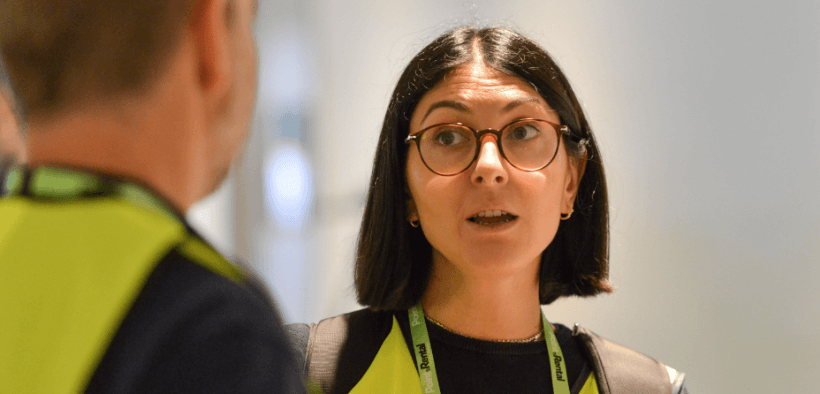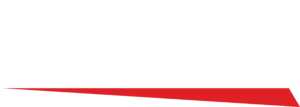Why UX matters for EWP Operators
Martin Sinclair Sep 09

ALMAC’S OANA SAMOILA SAYS HIRE HAS A ROLE TO PLAY IN INFLUENCING OEM AND THE USER EXPERIENCE (UX).
Almac’s Key Accounts Manager Oana Samoila returned to HIRE24 to address the Global Access meeting. She also found time to sit down with Hire and Rental magazine to share an OEM’s perspective on UX and the potential for Hire to influence design.
H&R: Oana, welcome back to Australia. Let’s talk UX. What is it and why is it important?
OS: UX is really the reality of a user’s experience — that is, the what, the when, the where, the who, the why and the how a person uses a system, which could be a product or website or app, or a service or interaction with your laptop.
From a manufacturer’s perspective, we need to be aware of how our users are actually using the product, not how we wish they were used based on the fact that we are all excellent users of our own products and know exactly why we put that feature in and how it should be used to improve the experience! At the end of the day, what’s important is what the user is going to do with your service or product and the more you listen to the user, the more your product or service is going to meet their expectation.
For hire companies, UX could be how they structure their service offerings. For example, who’s picking up the phone when an operator is calling with a problem? Is it a technician? Is it somebody who’s a skilled communicator but not skilled in the technical aspects of the product? It’s really thinking about how to communicate with the customer — the end user — and give them a better overall experience.
H&R: How does Almac incorporate feedback into their overall design?
OS: We’ve been in a very privileged position because we have patents for our innovative technology and are able to react to the market very quickly. That’s probably because we are not a huge manufacturer and are still very organic. We listen to what users are saying and can implement changes to our products within a few months, as opposed to a few years. These might not be huge changes but they’re sufficiently significant for customers to realise we’ve listened to them.
That also helps hire companies. Almac is a relatively small — on a global scale — Italian company and if we’re seen to be responding to feedback that improves the overall UX, our hire customers notice that we do our homework and are listening to what the market and service teams need. I’ll give you an example: our machines have internally designed telematics software, MyAlmac, which provides 24/7 access to technical documentation, management and monitoring tools giving users all the information they need to maintain and manage their AlmaCrawler platforms. However, the main feature is not necessarily the telematics, but rather the service and diagnostics, which allows the service guys to be trained and have access to the machines they have on fleet. As a result, they’re able to update and diagnose machines and recalibrate the chips remotely. This potentially saves many trips to the client but also allows them to correctly assess what they might need to take with them when they do go and visit the client.
H&R: If hire companies are getting UX feedback from their customers, what’s happens next?
OS: There are two conversations that can happen. One is at a service technician level and the other is from a sales perspective. However, both should also involve statistical data. When we see something happening consistently across the board in different countries, we know there likely needs to be a change.
We’re constantly paying attention to statistical data so if we notice there are parts being changed more frequently than others, we go back to the service teams first and then the fleet managers or depot managers and ask about their experience. Have you had a lot of customer calls? What have operators said? Has this impacted your overall return on this product? We then try to find a solution.
H&R: Is there a difference in the products that we buy here in Australia as opposed to in Europe or the US?
OS: Australia was the first market that truly embraced our products so we’re very fond of you! You’re very strict on health and safety and have taught us a lot which we’ve incorporated into our products. As a result, we’ve been able to massively improve the health and safety of our products (and ultimately improve the UX!), because you’re the first market for us and our products have to be certified in accordance with Australian Standards. We’ve also made the deliberate choice to not differentiate between Australia and our other markets so it’s the same product globally.
H&R: What’s the next big thing for Almac that hire companies can expect?
OS: There are a few things we’re currently curious about. One of them is obvious, the continued electrification of products, and it has been an eye opener for us in terms of what you can do with our products. We thought they were pretty cool before, but now we’ve made them fully electric with electric drive, we’re blown away. We’re also know lithium batteries are not forever so we are exploring hydrogen and if we can come up with a hydrogen pack in the next 2–5 years, then we’ll be able to swap out the lithium batteries. It’s making baby steps towards achieving a circular economy and is our way of trying to ensure that people won’t have to look at their machines and think they’re obsolete, just because something new and cool has come out.
The other thing is to move towards a full application of the Internet of Things. We believe there’s margin for improvement by actually studying how our machines are used, what their user experience is and trying to create a better design based on that information. It means incorporating as much technology as we can into the machine, even if it’s not clearly visible. It could be measuring the way somebody pushes a button and how hard they’re pushing it, giving us a better understanding of what part we should be installing.










